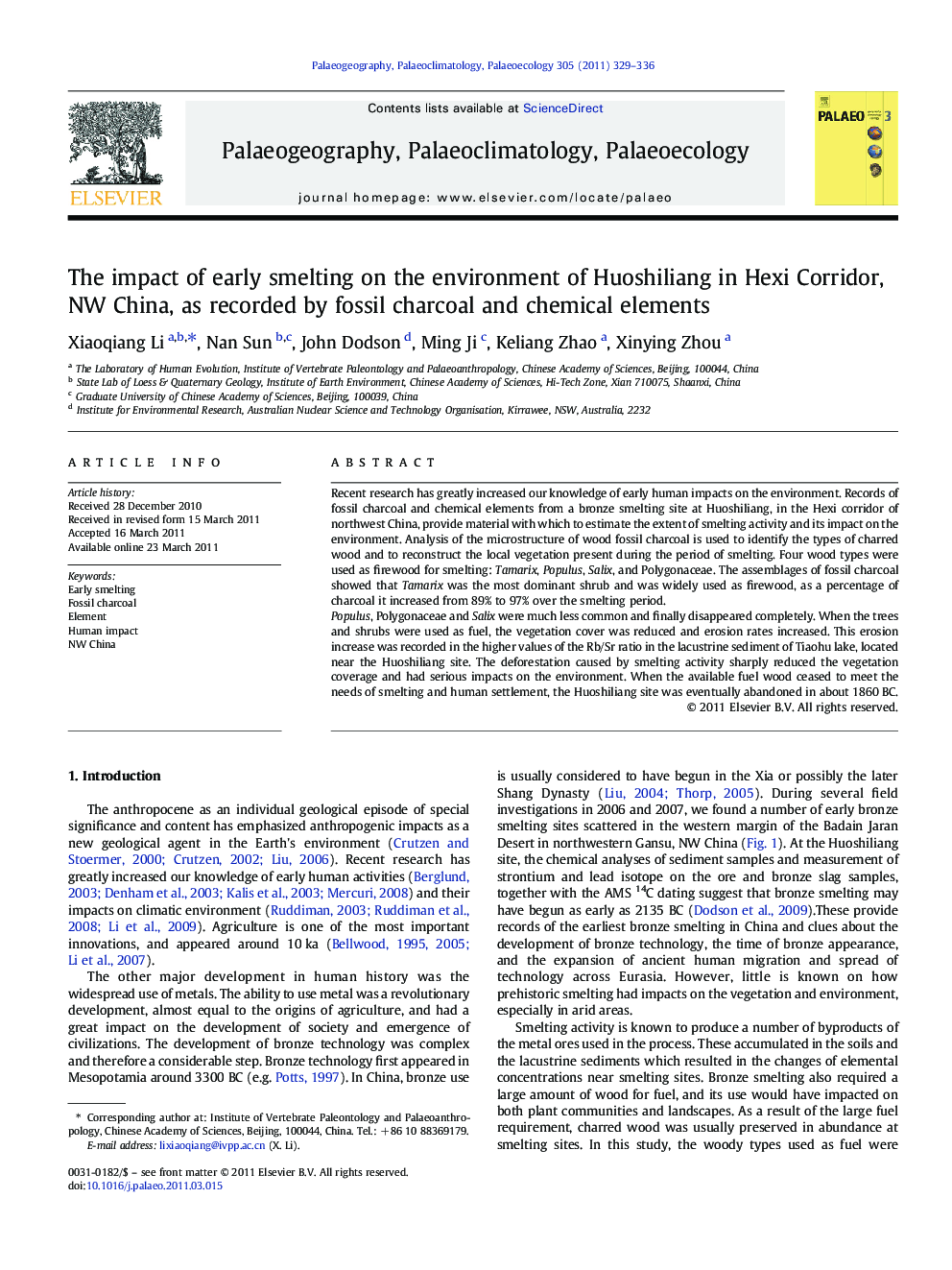| کد مقاله | کد نشریه | سال انتشار | مقاله انگلیسی | نسخه تمام متن |
|---|---|---|---|---|
| 4467377 | 1622256 | 2011 | 8 صفحه PDF | دانلود رایگان |

Recent research has greatly increased our knowledge of early human impacts on the environment. Records of fossil charcoal and chemical elements from a bronze smelting site at Huoshiliang, in the Hexi corridor of northwest China, provide material with which to estimate the extent of smelting activity and its impact on the environment. Analysis of the microstructure of wood fossil charcoal is used to identify the types of charred wood and to reconstruct the local vegetation present during the period of smelting. Four wood types were used as firewood for smelting: Tamarix, Populus, Salix, and Polygonaceae. The assemblages of fossil charcoal showed that Tamarix was the most dominant shrub and was widely used as firewood, as a percentage of charcoal it increased from 89% to 97% over the smelting period.Populus, Polygonaceae and Salix were much less common and finally disappeared completely. When the trees and shrubs were used as fuel, the vegetation cover was reduced and erosion rates increased. This erosion increase was recorded in the higher values of the Rb/Sr ratio in the lacustrine sediment of Tiaohu lake, located near the Huoshiliang site. The deforestation caused by smelting activity sharply reduced the vegetation coverage and had serious impacts on the environment. When the available fuel wood ceased to meet the needs of smelting and human settlement, the Huoshiliang site was eventually abandoned in about 1860 BC.
Research highlights
► Records of fossil charcoal and chemical elements from Huoshiliang site in NW China.
► Four firewood types of Tamarix, Populus, Salix, and Polygonaceae for smelting.
► Rb/Sr ratio and chemical elements show the erosion increasing between 2000–1860 BC.
Journal: Palaeogeography, Palaeoclimatology, Palaeoecology - Volume 305, Issues 1–4, 15 May 2011, Pages 329–336